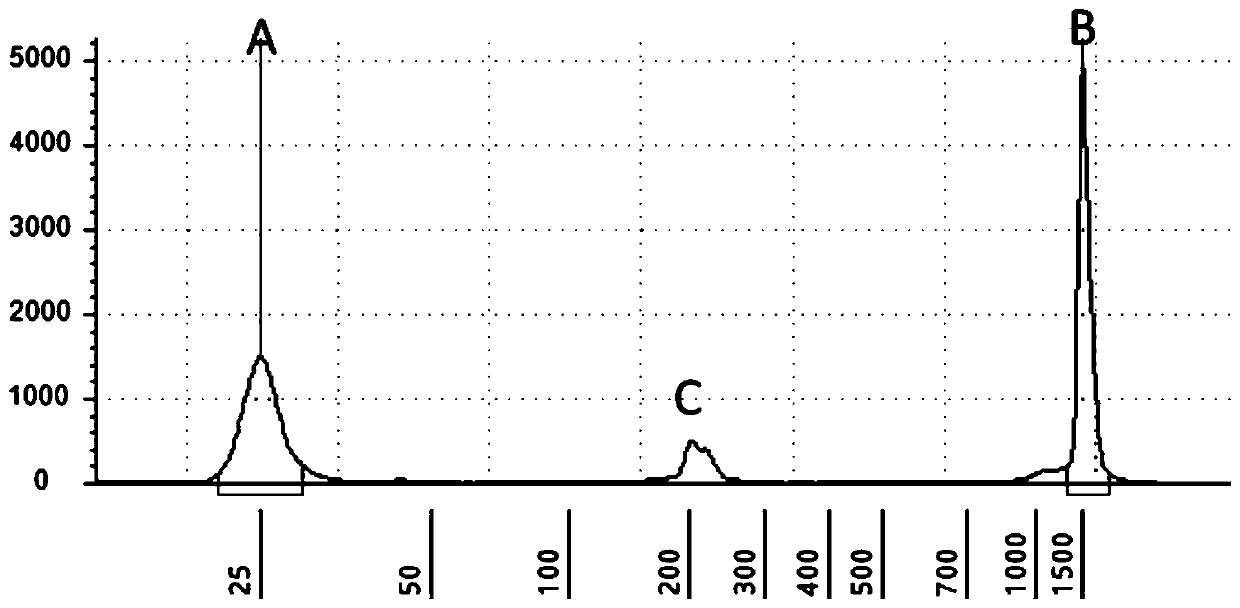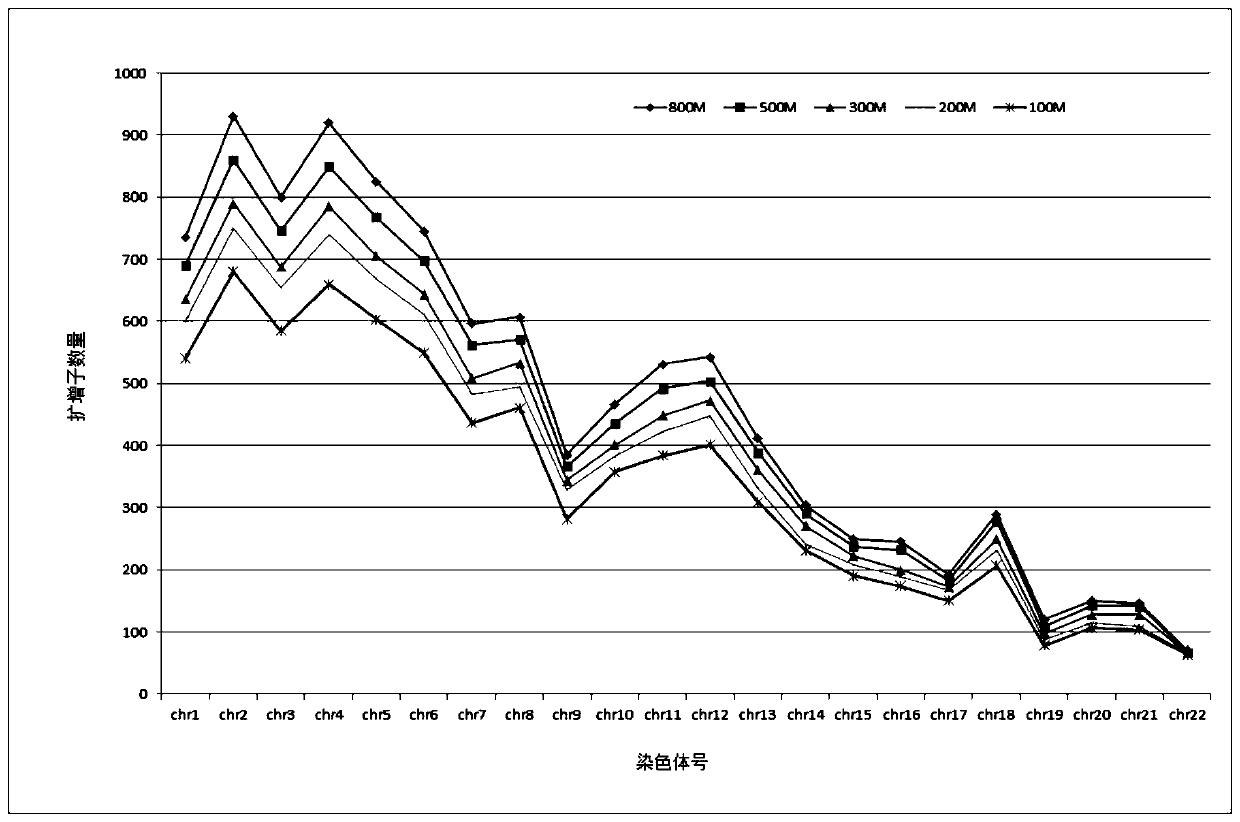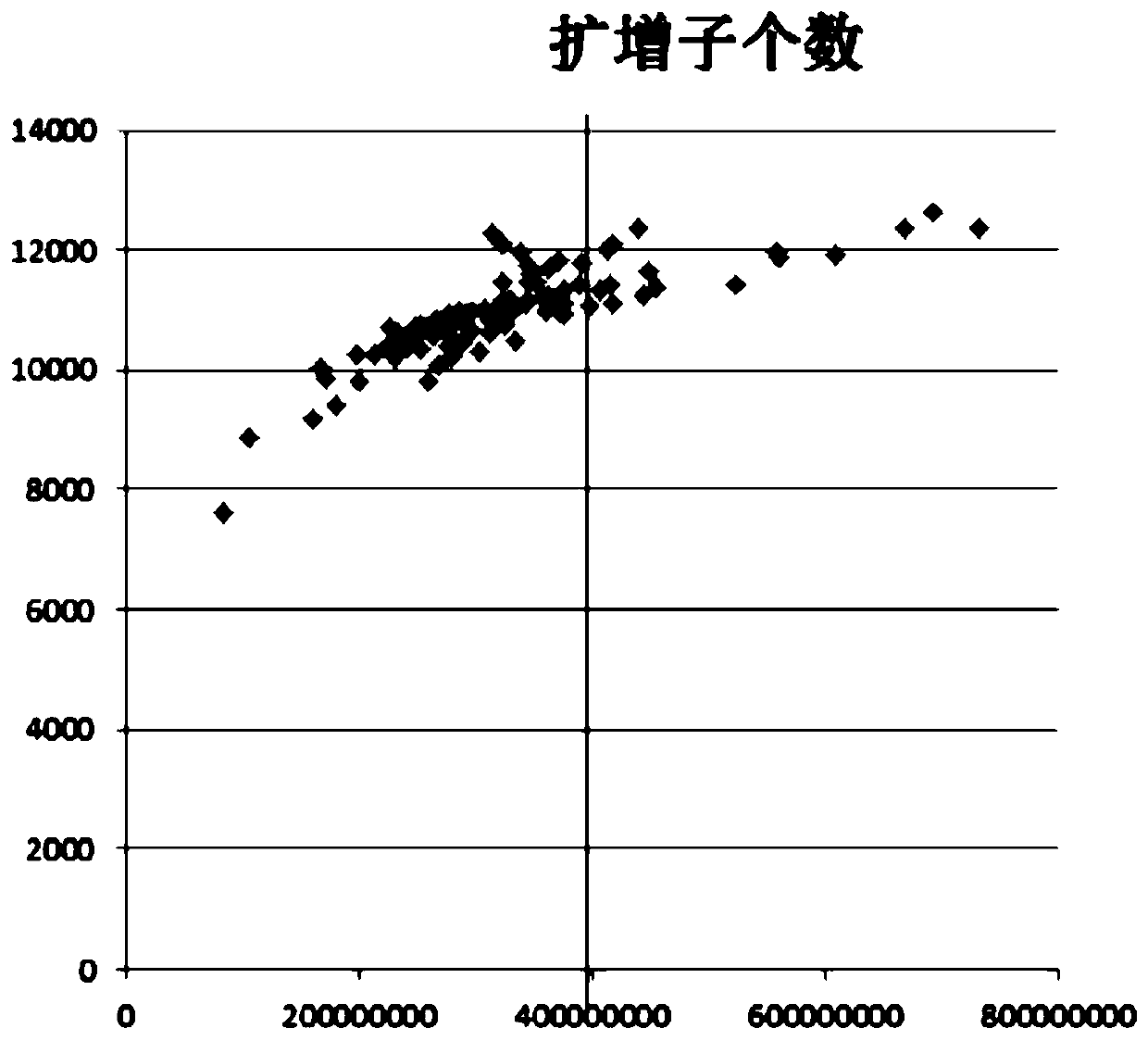Primer combination, kit and method for detecting autosomal copy number variation
A copy number variation and primer combination technology, applied in biochemical equipment and methods, recombinant DNA technology, microbial assay/inspection, etc., can solve the problems of high probe specificity, high cost, and high detection cost, and eliminate the The effect of sample contamination, short testing period and low testing cost
- Summary
- Abstract
- Description
- Claims
- Application Information
AI Technical Summary
Problems solved by technology
Method used
Image
Examples
Embodiment 1
[0058] Example 1 Establishment of detection of autochromatic copy number variation
[0059] 1. Design and synthesis of primer combinations
[0060] Design primer combinations according to the target retrotransposon region, including the following primer combinations:
[0061] Barcode primer (F1): Sequencing adapter 1 + barcode sequence for distinguishing different samples + universal sequence 1;
[0062] Upstream primer (F2): universal sequence 1 + molecular tag sequence + upstream specific primer sequence;
[0063] Optionally, the upstream primer (F2) is: general sequence 1+upstream specific primer sequence;
[0064] Downstream outer primer (R1): sequencing adapter 2+universal sequence 2;
[0065] Downstream inner primer (R2): universal sequence 2+downstream specific primer sequence;
[0066] Further, the length of the molecular tag is 6-30nt, consisting of M random bases and at least one set of specific bases, where M is a natural number greater than or equal to 6 and le...
Embodiment 2
[0121] Example 2 Detection of autochromatic copy number variation of genomic DNA in urinary sediment of bladder cancer
[0122] 1. Construction of amplicon library
[0123] 1) Design primers
[0124] The set of primers is:
[0125] Barcode primer (F1): sequencing adapter 1+barcode sequence+universal sequence 1;
[0126] Upstream primer (F2): universal sequence 1 + molecular tag + upstream specific primer sequence;
[0127] Downstream outer primer (R1): sequencing adapter 2+universal sequence 2;
[0128] Downstream inner primer (R2): universal sequence 2+downstream specific primer sequence;
[0129] The sequence of sequencing linker 1 is: CCATCTCATCCCTGCGTGTCTCCGACTCAG;
[0130] The sequence of general sequence 1 is: TCTGTACGGTGACAAGGCG;
[0131] The sequence of sequencing linker 2 is: CCTCTCTATGGGCAGTCGGTGAT;
[0132] The sequence of universal sequence 2 is: CTATGGGCAGTCGGTGAT;
[0133] The sequences of the upstream specific primer and the downstream specific primer ar...
Embodiment 3
[0175] Example 3 Autosomal copy number variation (CNV) of LINE-1 gene in brain cancer patients
[0176] Brain cancer training set construction: 30 healthy people as negative samples and 50 brain cancer patients with definite pathology as positive samples.
[0177] The samples to be tested were fresh surgical tumor tissue samples from 7 brain cancer patients.
[0178] 1. Amplicon library construction
[0179] 1. Synthesis of primers
[0180] Table 6 Primer Sequence
[0181]
[0182] Note: The barcode sequence corresponds to the 7 samples to be tested.
[0183] 2. According to the method in Example 1, the genomic DNA of the above-mentioned brain cancer training set and fresh surgical tumor tissue samples of 7 brain cancer patients was extracted, amplified and purified according to the method in Example 1 to finally obtain the training set and samples to be tested amplicon library.
[0184] 3. Compare and filter
[0185] Sequence the amplicon library of the training set ...
PUM
 Login to View More
Login to View More Abstract
Description
Claims
Application Information
 Login to View More
Login to View More - R&D
- Intellectual Property
- Life Sciences
- Materials
- Tech Scout
- Unparalleled Data Quality
- Higher Quality Content
- 60% Fewer Hallucinations
Browse by: Latest US Patents, China's latest patents, Technical Efficacy Thesaurus, Application Domain, Technology Topic, Popular Technical Reports.
© 2025 PatSnap. All rights reserved.Legal|Privacy policy|Modern Slavery Act Transparency Statement|Sitemap|About US| Contact US: help@patsnap.com



